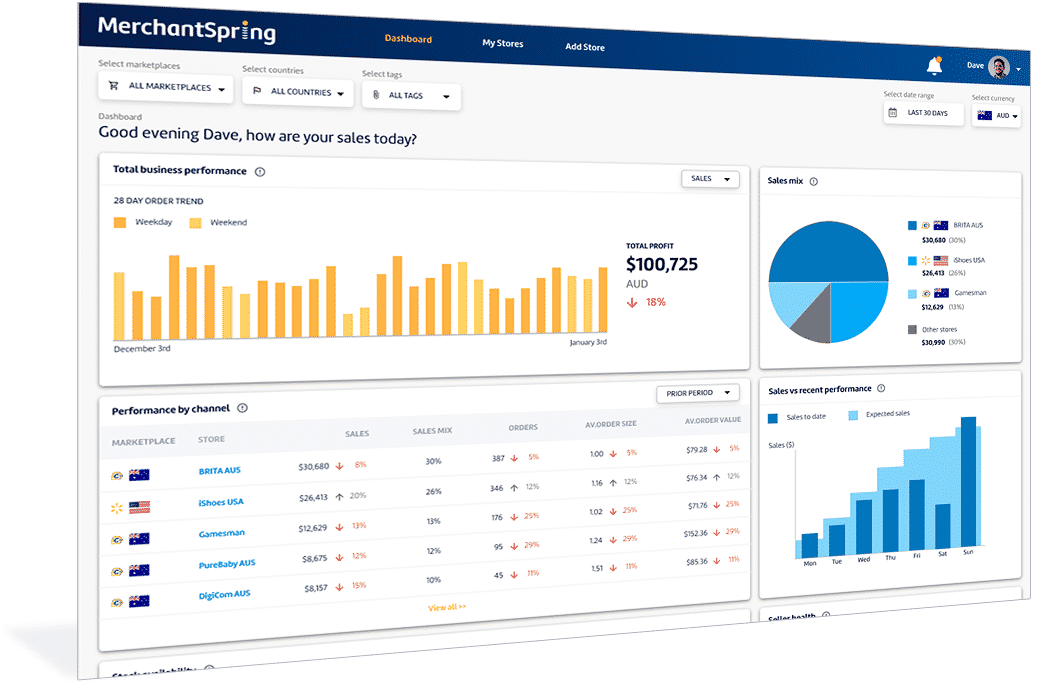Key Metrics for Assessing Advertising Performance for Agencies
In the fast-paced world of digital advertising, agencies must continuously measure and optimize their performance to stay ahead of the competition. Whether managing campaigns on Google, Facebook, or Amazon, understanding and utilizing key performance metrics is crucial for success.
This blog will delve into the essential metrics agencies should monitor to assess advertising performance effectively, with a particular focus on Amazon PPC (Pay-Per-Click) advertising. We'll explore metrics like Total Advertising Cost of Sales (TACoS), Advertising Cost of Sales (ACoS), and ad spend efficiency, and discuss how tools like m19 can streamline these processes.
Understanding the Importance of Metrics in Advertising
Metrics are the backbone of any advertising strategy. They provide insights into campaign effectiveness, highlight areas for improvement, and guide decision-making. For agencies, these metrics are vital for demonstrating value to clients, optimizing ad spend, and driving ROI (Return on Investment). Without a clear understanding of key metrics, agencies risk wasting resources on ineffective strategies and missing opportunities for growth.
Essential Metrics for Advertising Performance
1. Total Advertising Cost of Sales (TACoS)
TACoS is a comprehensive metric that measures the total advertising cost relative to overall sales. It provides a holistic view of how advertising efforts impact total revenue, not just the sales generated directly through ads. TACoS helps agencies understand the broader impact of their advertising campaigns on a client's business.
A lower TACoS indicates that your ads are not only driving sales but also contributing positively to your organic sales. Monitoring TACoS helps agencies understand the broader impact of their advertising efforts and make more informed budget allocation decisions.
2. Advertising Cost of Sales (ACoS)
ACoS is a more focused metric that measures the cost of advertising in relation to the sales generated directly from those ads. It’s a critical metric for evaluating the profitability of individual campaigns.
A lower ACoS indicates higher profitability, as it shows that less money is being spent to generate sales. Agencies aim to optimize campaigns to achieve the lowest possible ACoS while maintaining or increasing sales volume.
3. Return on Ad Spend (ROAS)
ROAS is a metric that measures the revenue generated for every dollar spent on advertising. It’s the inverse of ACoS and is crucial for understanding the effectiveness of ad spend. A higher ROAS indicates a more effective ad spend, meaning the campaign is generating significant revenue relative to its cost.
4. Click-Through Rate (CTR)
CTR measures the percentage of people who click on an ad after seeing it. It’s an important metric for assessing the relevance and appeal of ads to the target audience. A higher CTR indicates that the ad resonates well with viewers, leading to more clicks and potentially more conversions.
5. Conversion Rate (CVR)
CVR measures the percentage of clicks that result in a desired action, such as a purchase. It’s a key metric for evaluating the effectiveness of landing pages and the overall sales funnel. A higher CVR indicates that the campaign is successfully converting clicks into sales or other desired actions.
6. Cost Per Click (CPC)
CPC measures the average cost incurred for each click on an ad. It’s a fundamental metric for budgeting and managing ad spend. A lower CPC is generally desirable, as it means more clicks are being generated for the same ad spend.
7. Ad Spend Efficiency
Ad spend efficiency assesses how effectively an agency is utilizing its budget to achieve desired outcomes. It involves analyzing metrics like TACoS, ACoS, ROAS, and CPC to ensure that the ad spend is driving optimal results.
8. Impression Share
Impression share measures the percentage of times an ad is shown compared to the total available impressions for the target keywords. It’s a useful metric for understanding ad visibility and market share. A higher impression share indicates strong ad visibility, which can lead to increased brand awareness and sales.
Navigating Amazon PPC Advertising
Amazon PPC advertising presents unique challenges and opportunities for agencies. The platform’s competitive nature and dynamic auction system require continuous monitoring and optimization. Key metrics like TACoS, ACoS, and ad spend efficiency are vital for optimizing PPC performance on Amazon.
The Role of TACoS in Amazon PPC
TACoS is particularly important for Amazon PPC campaigns as it provides a comprehensive view of how ad spend impacts total sales. By tracking TACoS, agencies can assess the overall effectiveness of their advertising efforts and make data-driven decisions to improve performance.
Optimizing ACoS for Profitability
ACoS is crucial for managing the profitability of Amazon PPC campaigns. Agencies must continuously monitor and adjust bids, keywords, and targeting to achieve the lowest possible ACoS without sacrificing sales volume. This involves testing different strategies, analyzing performance data, and refining campaigns to maximize ROI.
Enhancing Ad Spend Efficiency with Amazon PPC Tools
Amazon PPC software tools like m19 offer advanced features for automating and optimizing campaigns. These tools can track valuable keywords, automate bidding strategies, and provide detailed performance insights, saving agencies significant time and effort. By leveraging these tools, agencies can enhance ad spend efficiency and achieve better visibility for their clients.
Leveraging Technology for Advanced Reporting and Insights
In today’s data-driven world, advanced reporting and analytics are essential for assessing advertising performance. Tools like m19 not only automate key processes but also provide comprehensive reports that help agencies understand campaign performance and identify opportunities for improvement.

Key Features of m19
– Advertising Automation: Automate bidding, budget allocation, and keyword management to optimize campaigns efficiently.

– Keyword Tracking: Monitor and analyze the performance of keywords to identify high-performing terms and adjust strategies accordingly.
– Detailed Reporting: Generate in-depth reports that provide insights into key metrics, helping agencies make informed decisions.

- Time Savings: Automate routine tasks to free up time for strategic planning and optimization.
By utilizing advanced tools like m19, agencies can streamline their workflows, improve ad performance, and deliver better results for their clients.
In Conclusion
In the ever-evolving world of digital advertising, understanding and leveraging key metrics is crucial for success. Metrics like TACoS, ACoS, ROAS, CTR, CVR, CPC, ad spend efficiency, and impression share provide valuable insights into campaign performance and guide decision-making. For agencies navigating the complexities of Amazon PPC advertising, these metrics are particularly important for optimizing performance and maximizing ROI.
Advanced tools like m19 play a vital role in automating and enhancing these processes, allowing agencies to save time and achieve better visibility for their clients. By staying on top of key metrics and leveraging the latest technology, agencies can drive continuous improvement, deliver exceptional results, and maintain a competitive edge in the digital advertising landscape.
Don’t miss out on the opportunity to refine your advertising strategies and elevate your performance. Start tracking these essential metrics today and unlock the full potential of your advertising campaigns.










Add a Comment